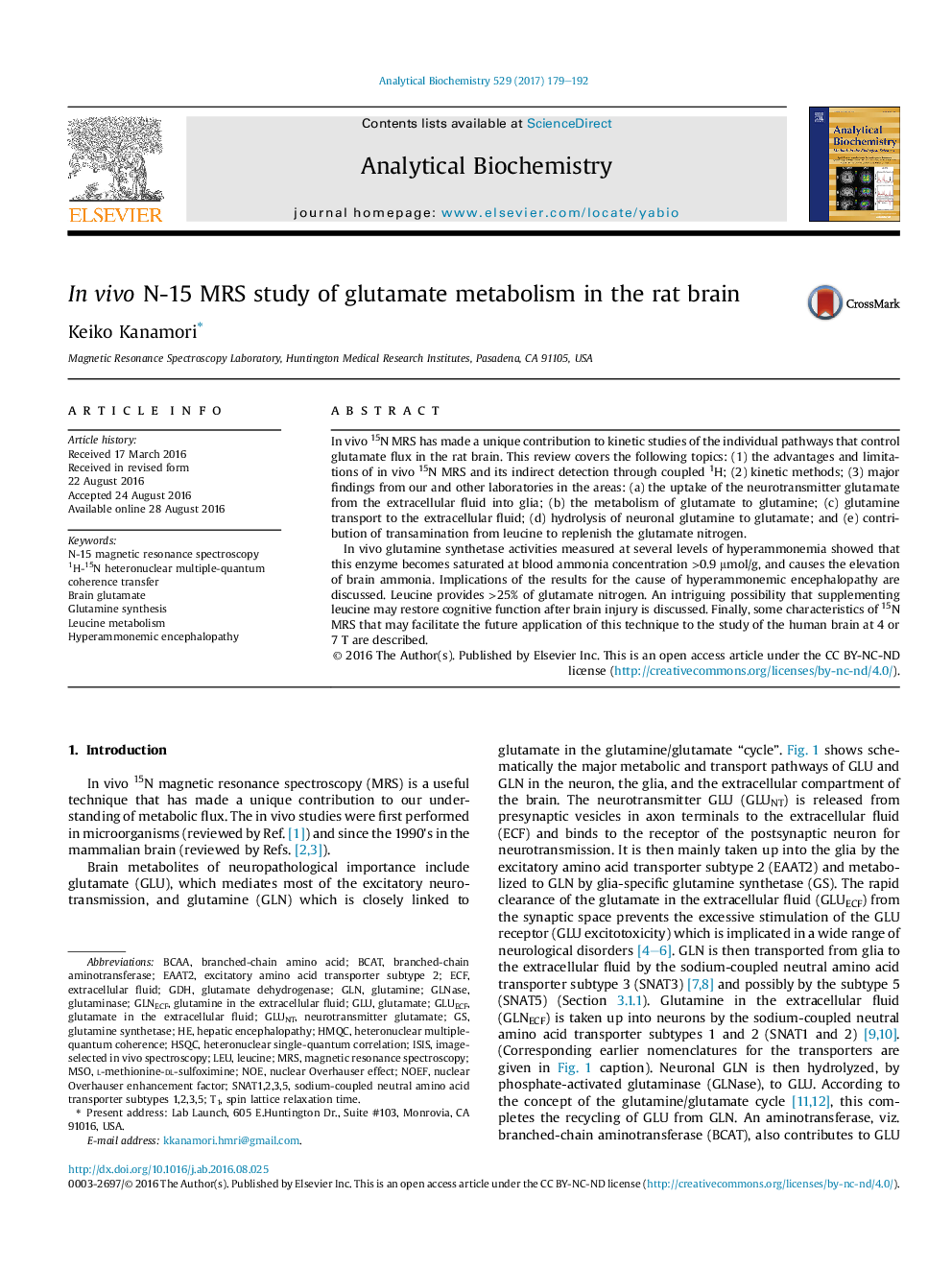| Article ID | Journal | Published Year | Pages | File Type |
|---|---|---|---|---|
| 5131605 | Analytical Biochemistry | 2017 | 14 Pages |
In vivo 15N MRS has made a unique contribution to kinetic studies of the individual pathways that control glutamate flux in the rat brain. This review covers the following topics: (1) the advantages and limitations of in vivo 15N MRS and its indirect detection through coupled 1H; (2) kinetic methods; (3) major findings from our and other laboratories in the areas: (a) the uptake of the neurotransmitter glutamate from the extracellular fluid into glia; (b) the metabolism of glutamate to glutamine; (c) glutamine transport to the extracellular fluid; (d) hydrolysis of neuronal glutamine to glutamate; and (e) contribution of transamination from leucine to replenish the glutamate nitrogen.In vivo glutamine synthetase activities measured at several levels of hyperammonemia showed that this enzyme becomes saturated at blood ammonia concentration >0.9 μmol/g, and causes the elevation of brain ammonia. Implications of the results for the cause of hyperammonemic encephalopathy are discussed. Leucine provides >25% of glutamate nitrogen. An intriguing possibility that supplementing leucine may restore cognitive function after brain injury is discussed. Finally, some characteristics of 15N MRS that may facilitate the future application of this technique to the study of the human brain at 4 or 7 T are described.
